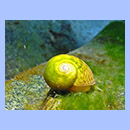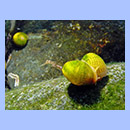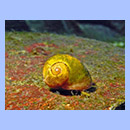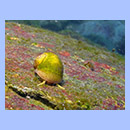- Kingdom: Animalia
- Phylum: Mollusca
- Class: Gastropoda
- Subclass: Caenogastropoda
- Order: Littorinimorpha
- Superfamily: Littorinoidea
- Family: Littorinidae
- Scientific name: Littorina obtusata
- Norwegian: butt strandsnegl

Littorina anatomy from Hayward & Ryland (2003)
Characteristics:
The two species of periwinkles, L. fabalis (previously called L. mariae) and L. obtusata are easily confused. The illustration to the left shows that they are best distinguished by the shape of the penis and the size and shape of the shell. However, studies in the Trondheim Fjord indicate that shell shape varies so much that even specialists find it difficult to make positive identifications from the shell alone. It is reported from Sweden that the L. fabalis usually has a yellow body while the color of L. obtusata is often black. Other observations indicate that body color tends to follow the color of the shell, regardless of species. The most common shell colors are black, olive green, brown and yellow, but even red shells have been reported. The shell of L. fabalis is more flattened than L. obtusata. The length of the L. obtusata may reach 15 mm, this is slightly larger than L. fabalis.
Habitat:
Both L. obtusata and L. fabalis are common in the intertidal zone, especially on rocky shores, along the entire Norwegian coast. L. fabalis, tends to live lower on the shore, but this is not a strict rule, they do mix in the same locations.
Distribution:
It is distributed from the western Mediterranean to northern Norway, including the British Isles.



